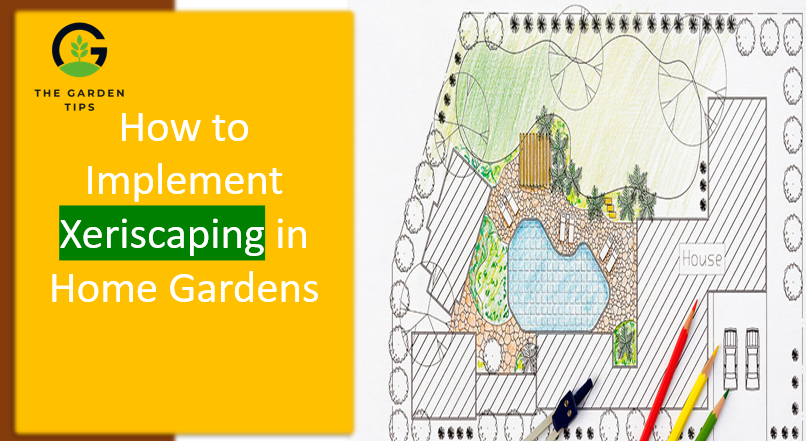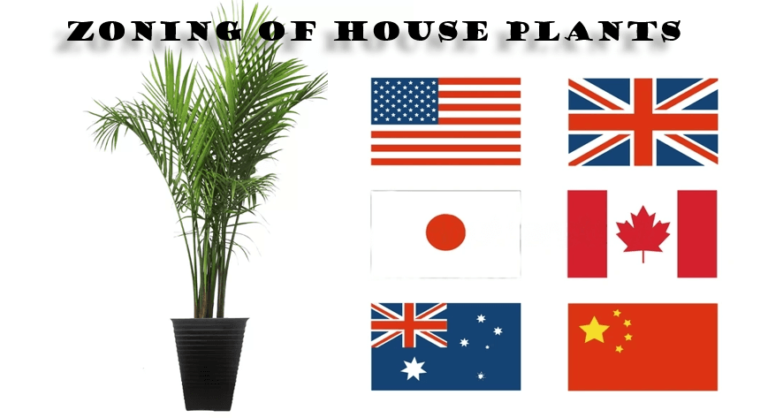Xeriscaping is a sustainable method involving using drought-resistant plants and reducing water usage. It is an excellent way to conserve water and create a beautiful, low-maintenance garden.

Xeriscaping is a landscaping approach that emphasizes water conservation. It is a popular choice for homeowners looking to reduce their water usage and create a more sustainable and eco-friendly garden.
Using drought-tolerant plants, mulching techniques, and other water-efficient practices, xeriscaping can help create a beautiful, low-maintenance garden that benefits the environment. This article will outline the steps and considerations for implementing xeriscaping in your home garden.
5 Steps to Implement Xeriscaping
· Step 1: Plan and design your xeriscape garden
Before you start implementing xeriscaping in your garden, it’s important to have a plan and a design. Consider the following:
- Determine the size of the area you want to xeriscape and its exposure to sun and wind.
- Decide on the type of plants you want to use. Look for species that are native to your region and that have adapted to local climate conditions.
- Group your plants based on their watering needs. For example, you might place drought-tolerant plants together in one area while grouping more water-dependent plants in another.
- Consider adding hardscape elements, such as paths or patios, to reduce the amount of space that requires irrigation.
· Step 2: Use drought-tolerant plants
One of the key elements of xeriscaping is using drought-tolerant plants that require less water. Some popular drought-tolerant plants include:
- Succulents: These plants store water in their leaves, making them ideal for dry climates. They come in a wide range of sizes and shapes and can add interesting texture to your garden.
- Cacti: Like succulents, cacti can store water in their stems, making them well-suited to hot, dry conditions.
- Lavender: This fragrant herb is drought-tolerant and attracts pollinators, making it a great addition to any xeriscape garden.
- Yucca: This plant is native to the Southwestern United States and Mexico, and is well-suited to dry, sandy soils.
· Step 3: Group plants according to watering needs
By grouping plants together based on their watering needs, you can help ensure each plant gets the amount of water it needs without wasting resources. Consider separating plants into three categories: high, moderate, and low water users.
- High water users: These plants require frequent watering and should be grouped in one area of your garden. Some examples include grasses and ferns.
- Moderate water users: These plants require less frequent watering and can be grouped in a separate garden area. Some examples include roses and hibiscus.
- Low water users: These plants require little to no watering and can be grouped in another area of your garden. Some examples include cacti and succulents.
· Step 4: Use mulch to retain moisture
Mulching is an important part of xeriscaping, as it helps retain moisture in the soil and reduces the need for watering. Some popular types of mulch include:
- Gravel: This is a popular choice for xeriscape gardens, as it doesn’t decompose and can add an interesting texture to your garden.
- Bark chips: These can be a great choice for larger plants, as they provide good coverage and help retain moisture.
- Organic mulch: This includes things like leaves or grass clippings and can help retain moisture in the soil.
· Step 5: Choose Appropriate Plants
When choosing plants for your xeriscape, it’s important to consider the following factors:
- Climate: Choose plants that are suitable for your region’s climate. This will ensure that your plants can survive with minimal water.
- Soil type: Choose plants that can thrive in your soil type. If you have sandy soil, for example, choose plants that tolerate dry conditions.
- Water requirements: Choose plants with low water requirements. This will reduce the amount of water you need to use for irrigation.
- Native plants: Consider using native plants in your xeriscape. Native plants are well adapted to your region’s climate and soil conditions and require less water than non-native plants.
- Group plants with similar water need together: Grouping plants with similar water needs together will help you avoid over- or under-watering.
By following these steps and choosing the right plants for your xeriscape, you can create a beautiful and sustainable garden that requires minimal watering and maintenance.
Best Plants for Xeriscaping
Here are some xeriscaping plant examples that are well-suited:
- Succulents: These plants store water in their leaves and can survive with minimal watering.
- Lavender: This fragrant plant is well adapted to dry conditions and requires very little water.
- Sage: This plant is drought-tolerant and can survive with little watering.
- Yarrow: This plant is drought-tolerant and produces beautiful blooms in a variety of colors.
- Coneflowers: These plants are native to North America and tolerate drought.
Tips to Implement Xeriscaping
By following the principles of xeriscaping, homeowners and landscapers can create beautiful and functional landscapes that require minimal maintenance and water. The following are some additional tips to consider when implementing xeriscaping principles:
- Use a mix of plants with different water requirements, grouping those with similar needs.
- Use drip irrigation, which is more efficient than traditional sprinklers.
- Choose plants that are appropriate for your local climate and soil conditions.
- Avoid planting turf grass, which is a high-water user and requires frequent mowing and fertilizing.
- Plant in the fall or spring, when temperatures are cooler, and rainfall is more abundant.
- Remove invasive species that can harm native plants and disrupt the ecosystem.
- Use non-toxic pest control methods, such as integrated pest management, focusing on prevention and natural remedies rather than pesticides.
- Consider hardscaping materials like gravel or pavers to reduce the amount of water needed for irrigation.







